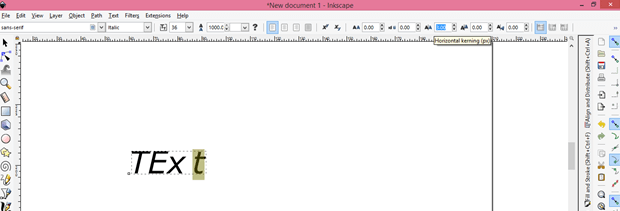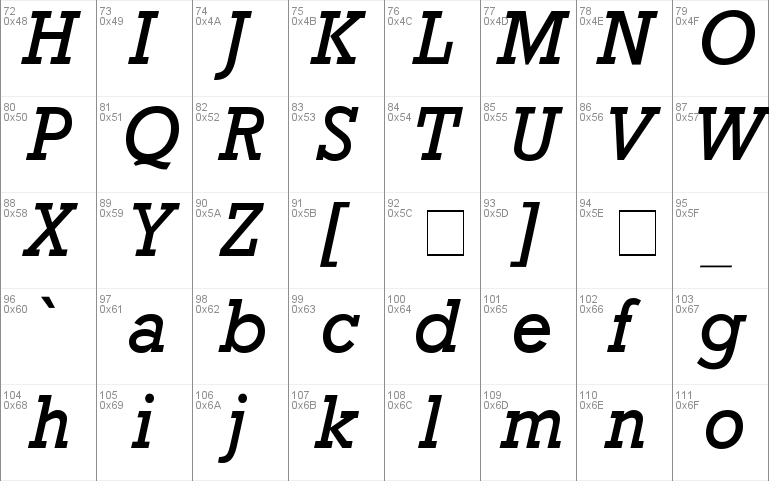

If the font you are using doesn't have a bold variant (for example 'Drukah'), you can select the text and add a StrokePaint to it, and then change the StrokeStyle width. Select only the text you want to make bold, then change the font style to the bold one. Here are the Inkscape buttons to do this: This can be a lot faster than manually deforming the speechbubble. Sometimes, a speechbubble would fit its text or surroundings more easily if it was mirrored vertically or horizontally, like the bottom speechbubble in this example: The tool "Tweak Object by Painting or Sculpting" of Inkscape is also useful to deform the speechbubble to wrap better around your texts. You can adapt the geometry of the speechbubble to match your translation (sometime translation needs larger speechbubble, or smaller). The arrow tool on the top of the vertical toolbar of Inkscape will allow you to deform the edges of the speechbubble. Keep a good looking padding distance around the text a text touching the edge of the speechbubble doesn't look good in general. But once you found them (often encapsuled in their own XML tags), you can easily replace only the text with your translation, save the text and reopen with Inkscape to see the rendering: the effect should be totally preserved.Īll speechbubbles are white geometric shapes made of vector point composed of two parts:īecause both element are white or use the same color and borderless they merge visually into a single shape. You might need to search (Ctrl+F) for it. This method is advanced because it requires to edit the SVG file with a text editor and locate in the jungle of XML tags where the letter of the effect are printed in it. To finish, the ultimate method when you want a 1:1 copy of the effect, is to edit the data of the SVG file directly. In this case, calming the turbulance, the width, or the drop shadow of an effect might be useful.


It's rarely required to translate the webcomic but I can imagine the situation where the effect is too strong and affect the glyph of a language.

Then you'll have sliders to edit all the thickness and colors of the effect. If you want to tweak the effect and access to this stack of settings, select the text and open the dialog Filters > Filter Editor. These filters are stack of effects that allows to add multiple outlines, variations of stroke, shadows and more. Some values can be negatives (under the baseline) and some positive (over the baseline).Īlmost all the sounds effect you'll meet in Pepper&Carrot uses SVG filters. It's nice to create some waves of high in the text and simulate some modulation of pitch of sound. More rarely used each letters can have various high compare to the baseline of the text.
#Inkscape font appears italic full
I often use it to overlap them a bit to give a bit more packed aspect to the full sound making the letter touch each other. Horizontal (in-between character) spacing: Values can be positive (clockwise) or negative (anti-clockwise). Unfortunately, here also the rotation gets crunched at editing the text. I often apply the same value to all the letters of a soundFX and shear the whole box or put the text on a path. Rotation of individual letters can be very useful to produce cascading effects. This type of data are generally lost while editing but can be edited back by selecting each letter and giving them a different size (eg. It convey the volume of the sound: fading, or increasing. So here is a list of method you can apply to recover the effects: Resize letters one by one:Ī big classic (and the case in the visual above "common issue") is when the onomatopoeia has different size for each letters. Unfortunately, some part of the text effects will be deleted by the editing and not look as it was on the source: You can always start by editing text as you would do by double clicking on it and type your translation. I had to find a compromise between having artistic onomatopoeia and something possible to edit. The result is anyway often very subjective and will be only here to show to the reader that a sound is important for the story and/or help their imagination to complete the missing soundtrack. Sometime it could be as simple as trying out the sound out loud with your mouth, and then using the phonology of your language. In case you find yourself having difficulty translating a sound: just trust your instincts provided by comics in your culture and use the spelling that sounds most right to you. Translating sound effects can be difficult. This page contains Inkscape tips, translation tips, and more tips to help you while translating Pepper&Carrot SVG files.


 0 kommentar(er)
0 kommentar(er)
